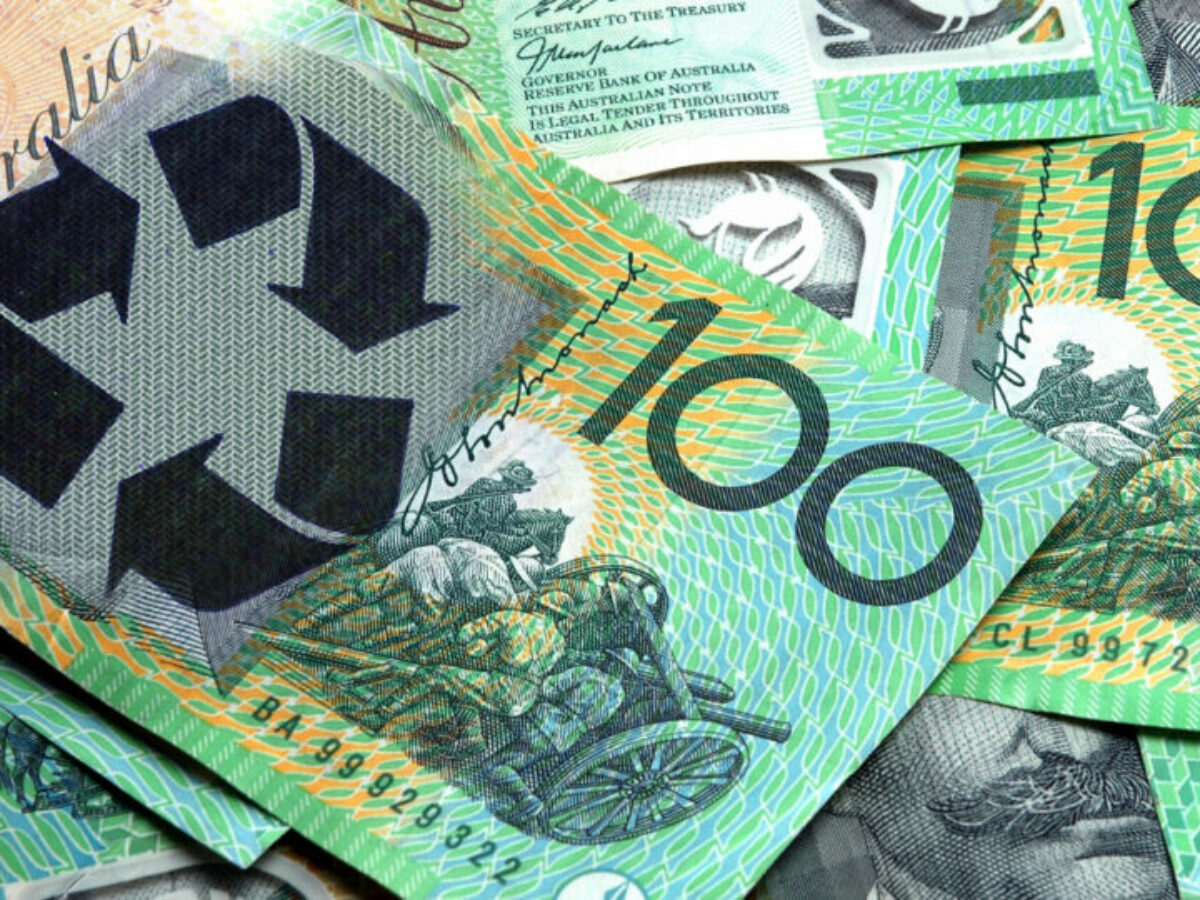Budget 2021-22: What it means for the Circular Economy

By Dr Kar Mei Tang
With international pressure mounting on Australia to commit to more substantial action on climate change, Budget 2021-22 was an opportunity — coupled with a once-in-a-generation social license to spend strategically to ‘build back better’ — to set out the government’s strategy towards addressing these concerns.
So what’s in the budget for the Circular Economy?
Materials & recycling
New funding for waste and resource recovery initiatives was a very modest $78 million. This was not unexpected after last year’s budget announcement of a historically significant ($250m) boost for Australia’s recycling infrastructure. The bulk of new funding has been directed towards diverting organic waste from landfill (thus also addressing emissions reduction).Recycling. The Government is investing $11 million to support Australia’s recycling industry, including an additional $5.9 million over four years from 2021-22 for the National Product Stewardship Investment Fund and $5 million over three years from 2021-22 to help small businesses adopt the Australasian Recycling label. Organic waste. The Government is investing $67 million over four years from 2021-22 to enhance organic waste facilities and support community education to reduce food waste going to landfill. This includes:
- $59.8 million to deliver grants in partnership with states and territories through a Food Waste for Healthy Soils Fund to enhance existing organic waste and processing infrastructure and make better use of this resource.
- $7.2 million to deliver a community and education program on the benefits of processed organic waste.
NSW Circular welcomes these recycling and organic waste initiatives including the Food Waste for Healthy Soils. A similar grants program for textiles is urgently needed to tackle textile waste. Australia is ranked second in the world for textile disposal. Households account for nearly 90% of our textile waste. As a nation we threw away some 300,000 tonnes of textiles in 2018- 19. Of this, over 90% was landfilled for disposal (of which around two-thirds are likely synthetic fibres that may never biodegrade) and energy recovery, and a smaller amount is exported (mainly to developing countries).
Energy & emissions reduction
Compared to our global counterparts like the UK and Canada, the allocated spend on climate change action is small. The Government remains clearly committed to a gas-fired recovery although the largest share of the $1.8 billion allocated to the energy sector has been directed towards emissions reduction. However, this funding focuses strongly on investment in technologies identified in the Technology Investment Roadmap which has been widely debated as not going far enough to create a pathway away from a future reliant on fossil fuels.
- The cornerstone of this is the $1.2 billion Technology Co-investment Facility (allocated over ten years from 2021-22) that will invest in priority low emissions technologies and practical project-based international partnerships. It will support the development of regional hydrogen hubs, carbon capture, use and storage technologies, very low cost soil carbon measurement and new agricultural feed technologies, a high-integrity carbon offset scheme in the Indo-Pacific region, and support the implementation of the Technology Investment Roadmap.
- Additional measures to support affordable, reliable and secure power supply include:
- $316.7 million to help businesses reduce energy costs and emissions by supporting voluntary action and helping businesses reduce their energy use.
- $215.4 million to boost dispatchable generation. This includes underwriting Portland Aluminium Smelter’s participation in the Reliability and Emergency Reserve Trader mechanism, battery and microgrid projects in the Northern Territory and Queensland, and gas generator projects.
- Innovation is also a recurrent theme in Budget 2021-22. Initiatives include:
- Introduction of a patent box tax regime for medical and biotech patents from income years starting on or after 1 July 2022, where income derived from these patents are taxed at a concessional effective corporate tax rate of 17 per cent. The Government will consult on whether a patent box would be effective in supporting the clean energy sector.
- The Australian Energy Regulator will develop a regulatory sandbox service for the energy market, providing temporary waivers from regulatory requirements to enable trials of new business models.
NSW Circular would like to see this regulatory sandbox extended to waste and water reuse and mobility. This is particularly needed to scale circular business models by opening up opportunities for investment in sustainability, innovation and competition in our current utilities markets that have centralised and ageing infrastructure. There is a need for regulatory mechanisms to provide cost effective access to and innovative market reform to enable ‘sharing & reuse’ business models.
Supply chain resilience
- The Government is examining supply chain vulnerabilities for critical products, starting with personal protective equipment (PPE), medical products and agricultural production chemicals, which will inform initial investments. From July 2021, the Government will deliver grants to businesses under the $107.2 million Supply Chain Resilience Initiative established last year to build capabilities that address and identify critical supply chain vulnerability to ensure we have access to the critical product inputs needed to secure our supply chains and support Australian manufacturers.
- The Government is also establishing an Office of Supply Chain Resilience to monitor vulnerabilities and coordinate whole-of-government responses to improve ongoing access to essential goods.
NSW Circular welcomes the focus on Supply Chain resilience. Against this priority we would like to see greater emphasis on building local jobs and investment around local recycled and manufactured products with lower carbon footprints.
Agriculture
- Soil health. $237.9 million to help improve farms’ soil health to support the National Soils Strategy, increase farm yields and reduce emissions. This includes incentives and services to help farmers in soil testing, building up the National Soil Resources Information System with additional data, introducing a National Soils Science Challenge to advance understanding of Australia’s soils.
- Murray-Darling Basin: managing water resources. The Government is redirecting $1.5 billion from the Water Efficiency Program to water saving Initiatives, including $1.3 billion to invest in modernising off-farm irrigation infrastructure in the Murray-Darling Basin, $150 million for grants to support off-farm water saving projects, and $60 million to support states’ on-farm water efficiency initiatives.
The circular economy has a significant role to play in reducing carbon emissions in food production and agriculture and improving productivity. NSW Circular would like to see greater focus on circular agricultural practices to reduce waste (not just organic waste), recycle water and generate local renewable energy. Optimising transport is an important element to achieving efficiencies and can be supported by increasing the percentage of food grown and consumed locally. Australia and the world cannot get to zero carbon without a circular economy. Recent analysis by the Ellen Macarthur Foundation and Material Economics demonstrates that while the transition to renewable energy can cut about 55 percent of the Paris Agreement carbon reductions needed, the remaining 45 percent are locked in products and food.
Climate resilience
- An Australian Climate Service will be established, to formally start operations from July 2021. This will bring together scientists from the Bureau of Meteorology, CSIRO, ABS and Geoscience Australia to support Emergency Management Australia and the National Recovery and Resilience Agency. The service will provide advice on risks from climate change, and provide an environmental road map to inform planning for infrastructure, housing and basic services like power, telecommunications, and water.
- The Government is refreshing its 2015 National Climate Resilience and Adaptation Strategy, to be released in the second half of 2021, to provide an updated pathway for building the community and economic resilience to climate change.
- $100 million over five years from 2021-22 to support the blue economy through its Oceans Leadership Package to manage ocean habitats and coastal environments while reducing emissions.
Building the jobs and industries of the future
While there are many things to applaud in the Budget, a clear pathway for Australia to modernise and decarbonise its economy remains a missed opportunity.
The jobs and industries of the future will be underpinned by circular, zero emissions technologies, infrastructure, products and services. These industries will leverage resources that can stay in the economy longer, extracting more value, growing jobs and investment.
Australia still hasn’t yet committed to achieving net zero emissions by 2050, making it an outlier among developed nations (something that over 100 other nations, including New Zealand, the UK, Japan and Korea have committed to doing so). However, the Prime Minister did state that Australia would update its long-term emissions reduction strategy ahead of the November COP26 climate conference in Glasgow.
The multi-billion infrastructure spending package is silent on how this pipeline can be leveraged to incorporate circular economy. While Infrastructure Australia has made important steps to recognise next-generation circular waste infrastructure in its priority infrastructure list, A greater focus on circular economy outputs is urgently required including:
- Next- generation Infrastructure
- electric vehicles and charging stations
- Shared mobility options
- Recycled water
- Circular economy hubs to recycle and re-manufacture components
- Infrastructure procurement:
- using low-carbon and recycled materials
- Infrastructure construction methods
- prefabrication, modular design, low carbon, sustainable building materials
- Infrastructure materials tagging and tracing
- to optimise asset maintenance, repair, and recycling at end-of-life
These initiatives would not only embed more sustainable practices in our infrastructure sector nationally, but importantly also catalyse new industries and markets for these goods and services, and add to long-term productivity and sustainability while reducing our environmental impacts.
To ‘build back better’, we need the right policy environment to make our industries future-ready in a resources-constrained world. The 2021-22 Budget makes an incremental step towards a circular economy and net zero emissions, but there remain substantial opportunities for future work and investment.
Picture: The New Daily
Dr Kar Mei Tang is Chief Circular Economist, NSW Circular.
This briefing first appeared at NSW Circular’s website. Click here to see the original version.
Subscribe to our free @AuManufacturing newsletter here.
Topics Analysis and Commentary
@aumanufacturing Sections
Analysis and Commentary Awards Defence Manufacturing News Podcast Technology Videos










